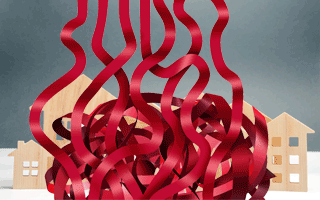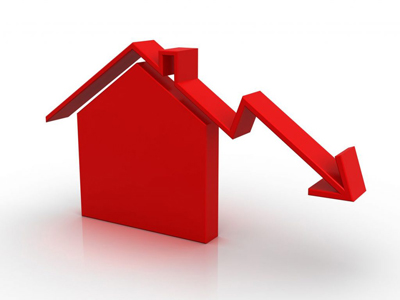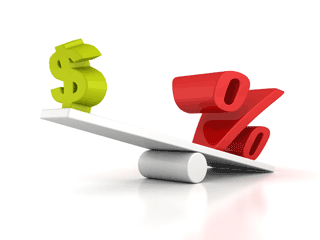Quote Of The Week
“Property owners are beginning to feel the crunch of higher cost of living due to inflation combined with rising interest rates. This has motivated many to review their home loan and look for a better deal.”
Mike Gill of PEXA
Red Tape Causing Housing Shortage
 The building industry is warning of a looming housing shortage as state and local government planning bottlenecks choke the supply of new homes.
The building industry is warning of a looming housing shortage as state and local government planning bottlenecks choke the supply of new homes.
Analysis by the National Housing Finance and Investment Corporation warns that as soon as international migration returns to pre-pandemic levels, there will be an even bigger shortage of properties.
It says the number of households exceeding new supply will rise to about 163,400 homes in the next decade.
Mirvac’s Susan Lloyd-Hurwitz suggests a federal productivity payment could encourage the states to boost housing supply.
Tony Lombardo of Lendlease has seen in Singapore how a carefully managed approach to housing and planning can deliver in months what it takes years to approve in Australia.
“We should have bipartisan support to a 25-year vision that actually says, ‘this is where our corridors are going to grow’,” he says. “Let’s get those mapped out quite precisely, that both sides of politics support, and then facilitate how that gets approved.”
Smaller Lenders Offering Lower Rates
 Homeowners may be able to take advantage of the competition from smaller banks to negotiate better mortgage rates, despite the Reserve Bank lifting the official interest rate twice this year.
Homeowners may be able to take advantage of the competition from smaller banks to negotiate better mortgage rates, despite the Reserve Bank lifting the official interest rate twice this year.
Mike Gill of PEXA says the RBA increases have resulted in more competition in the lending market, which means good opportunities for borrowers.
While the major banks passed on the full RBA cash rate increase to customers, many non-major lenders chose not to pass it on, to stay competitive and win market share.
“The non-major banks have been successful in winning more re-finances than they have lost in all states so far in 2022,” he says.
PEXA’s latest Refinance Index shows that refinancing has increased in 2022 by 21.5%.
“Property owners are beginning to feel the crunch of higher cost of living due to inflation combined with rising interest rates,” says Gill. “This has motivated many to review their home loan and look for a better deal.”
Rises Won’t Add To Cost-of-living
 Interest rate rises may be front and centre for most borrowers at the moment, but the RBA says most households are well placed to absorb increases despite higher costs of living.
Interest rate rises may be front and centre for most borrowers at the moment, but the RBA says most households are well placed to absorb increases despite higher costs of living.
RBA governor Phillip Lowe says the June increase of 50 basis points to 0.85% will help bring down inflation over time.
He says RBA data shows households are generally well ahead on mortgage repayments, with financial stress “low and declining”.
According to the RBA many households increased their savings during the pandemic while interest rates were low.
Homeowners with variable-rate loans already have a median 21-month buffer on their repayments, compared with 10 months’ worth at the start of the pandemic.
RBA analysis indicates that even if variable rates were to lift by 200 basis points, more than 40% of borrowers are already making monthly repayments which are large enough to cover those increases.
It says many households have ample time to adjust to future hikes.
Borrowers Can Handle Higher Rates
 Westpac agrees with the RBA that the vast majority of its customers can cope financially with the interest rate rises.
Westpac agrees with the RBA that the vast majority of its customers can cope financially with the interest rate rises.
Chief executive of consumer and business banking, Chris de Bruin, says the chances of widespread mortgage stress this year are low.
He says customers and businesses were well prepared for rates to lift above what are abnormally low levels.
“Even (the official rate) at 1.5% we are still talking about very, very low interest rates,” de Bruin says.
“I think the important thing to recognise is that we’ve been through a long period of ultra-low interest rates, so this is a natural reversion to some degree.”
He thinks future increases will be steady and affordable to most Australians, although he admits there may be hardship for some borrowers “at the margin”.
Household spending is strong, businesses are generally confident and both consumers and businesses can handle higher rates as it was never going to remain so low for ever.
Renters Hit Harder Than Owners
 Those who may be hit hardest by increasing interest rates don’t even own property, according to Domain chief of research Nicola Powell.
Those who may be hit hardest by increasing interest rates don’t even own property, according to Domain chief of research Nicola Powell.
Powell says renters are the ones who may really start to feel the strain.
She says there is already a dire shortage of accommodation, with vacancies at rock-bottom levels, and if investors try to pass on all or some of the increased cost of their mortgages it is the renters who will struggle.
AMP Capital chief economist Shane Oliver says, with market conditions so tight and vacancy rates so low, tenants may not have too many other alternative properties to move to if their rent does increase.
“Or if they’d been saving up for a deposit, then it’s now going to be harder for them to buy,” he says.
RateCity research director Sally Tindall says tenants in areas where there are already shortages of rental accommodation may find themselves “throwing more money at rents” to keep their homes.




